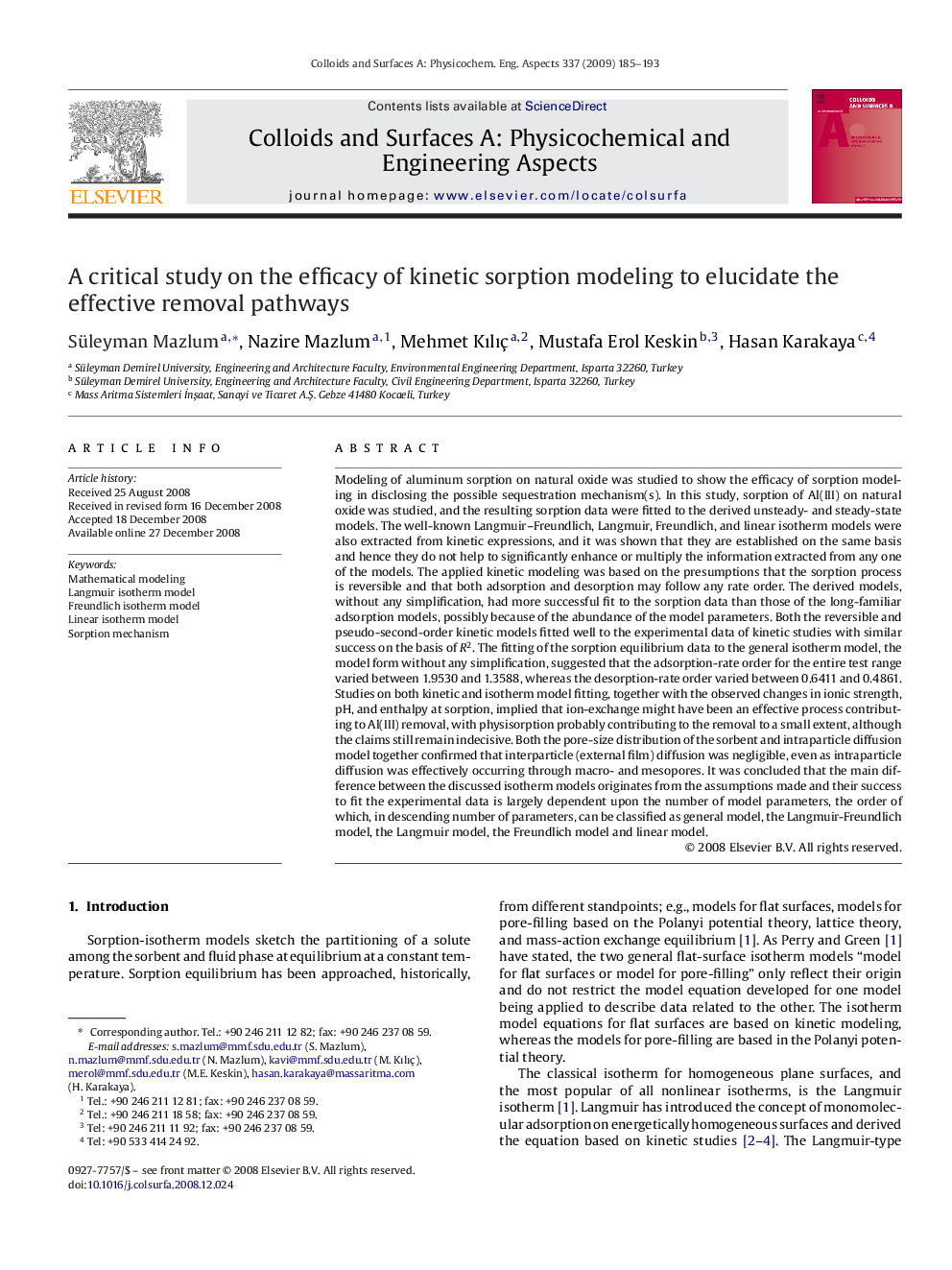| Article ID | Journal | Published Year | Pages | File Type |
|---|---|---|---|---|
| 596122 | Colloids and Surfaces A: Physicochemical and Engineering Aspects | 2009 | 9 Pages |
Modeling of aluminum sorption on natural oxide was studied to show the efficacy of sorption modeling in disclosing the possible sequestration mechanism(s). In this study, sorption of Al(III) on natural oxide was studied, and the resulting sorption data were fitted to the derived unsteady- and steady-state models. The well-known Langmuir–Freundlich, Langmuir, Freundlich, and linear isotherm models were also extracted from kinetic expressions, and it was shown that they are established on the same basis and hence they do not help to significantly enhance or multiply the information extracted from any one of the models. The applied kinetic modeling was based on the presumptions that the sorption process is reversible and that both adsorption and desorption may follow any rate order. The derived models, without any simplification, had more successful fit to the sorption data than those of the long-familiar adsorption models, possibly because of the abundance of the model parameters. Both the reversible and pseudo-second-order kinetic models fitted well to the experimental data of kinetic studies with similar success on the basis of R2. The fitting of the sorption equilibrium data to the general isotherm model, the model form without any simplification, suggested that the adsorption-rate order for the entire test range varied between 1.9530 and 1.3588, whereas the desorption-rate order varied between 0.6411 and 0.4861. Studies on both kinetic and isotherm model fitting, together with the observed changes in ionic strength, pH, and enthalpy at sorption, implied that ion-exchange might have been an effective process contributing to Al(III) removal, with physisorption probably contributing to the removal to a small extent, although the claims still remain indecisive. Both the pore-size distribution of the sorbent and intraparticle diffusion model together confirmed that interparticle (external film) diffusion was negligible, even as intraparticle diffusion was effectively occurring through macro- and mesopores. It was concluded that the main difference between the discussed isotherm models originates from the assumptions made and their success to fit the experimental data is largely dependent upon the number of model parameters, the order of which, in descending number of parameters, can be classified as general model, the Langmuir-Freundlich model, the Langmuir model, the Freundlich model and linear model.
